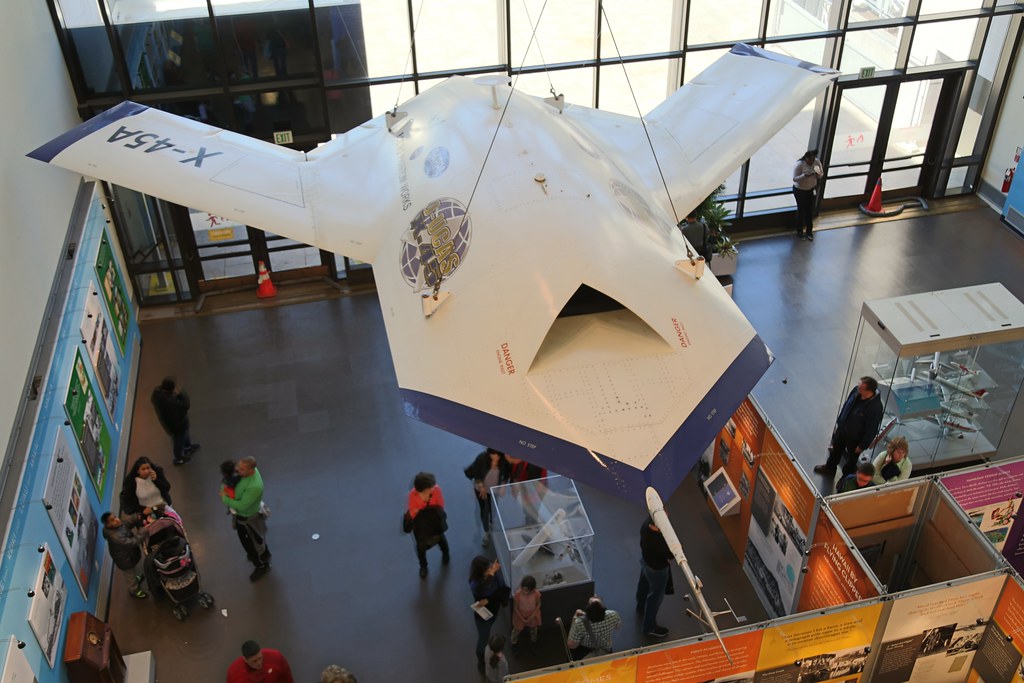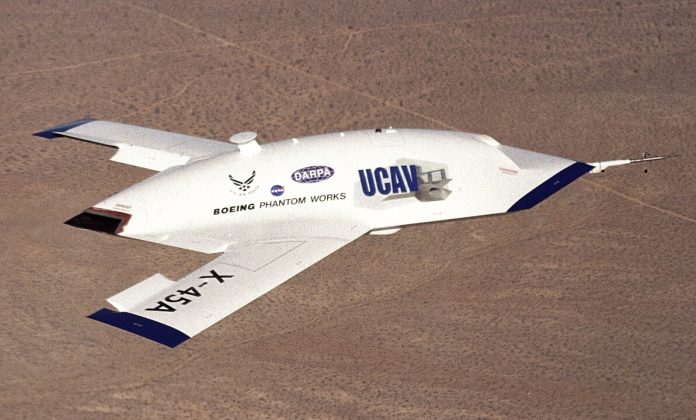
The innovative X-45A showed that autonomous unmanned aircraft could effectively target enemy air defenses (called Suppression of Enemy Air Defense or SEAD). Initially led by Defense Advanced Research Projects Agency (DARPA), the program was subsequently overseen by the U.S. Air Force and U.S. Navy. Throughout testing, the stealthy X-45A achieved numerous notable milestones in aviation history.

Boeing’s clandestine “Phantom Works” division wrapped up the construction of the first X-45A prototype in September 2000. This secretive development drew upon the clandestine research gleaned from the Bird of Prey project, a venture enveloped in stealth and innovation. The X-45A’s maiden flight materialized in May 2002, with a second craft joining the skies later in November, underscoring the rapid progress of the program.

A landmark achievement unfurled in April 2004 as the X-45A deftly struck a ground target employing an inert precision-guided weapon. By August of the same year, a groundbreaking feat was recorded as one pilot-operator successfully controlled two X-45As in flight.

Yet, it was in 2005 that the X-45A’s capabilities truly shone. Tasked with a pre-programmed SEAD mission to neutralize simulated Surface-to-Air Missile (SAM) systems, the UCAVs encountered an unexpected threat: a new SAM site not previously accounted for. Demonstrating exceptional decision-making prowess, the aircraft’s onboard software swiftly recalibrated their strategies, assigning target responsibilities based on their tactical positioning, arsenal, and fuel reserves. This exercise reached a successful denouement after the pilot operator, stationed at Edwards AFB in California, verified and sanctioned the attack plan formulated by the aircraft’s sophisticated algorithms.

The Boeing X-45A’s arsenal could ferry up to eight Small Diameter Bombs in its weapons bays, a testament to its significant payload capacity. Powered by the Honeywell F124-GA-100 turbofan engine, capable of delivering 6,500 pounds of thrust, the UCAV boasted a cruising speed of approximately 610 mph, a service ceiling of 40,000 feet, and could handle a maximum payload of 4,500 lbs.

Marc Pitarys of the Air Force Research Laboratory’s Information Directorate serves as the UCAV Technical Director and commented, “Our approach involves integrating unmanned air vehicles with command and control information to provide human operators with the situational awareness and decision-making resources necessary for destroying targets. The future UCAV system will allow operators who are far removed from enemy threats to achieve effects in the battlespace through a ‘point-click-kill’ capability.”

“The fact that we have now demonstrated both the hardware and the basic software for the key demonstrations that are the heart of the UCAV program multi-vehicle cooperative operations shows that we are well on our way to demonstrating the technical feasibility of the UCAV system,” said Col. Earl Wyatt, USAF, DARPA’s UCAV program manager.
related images you might be interested.









